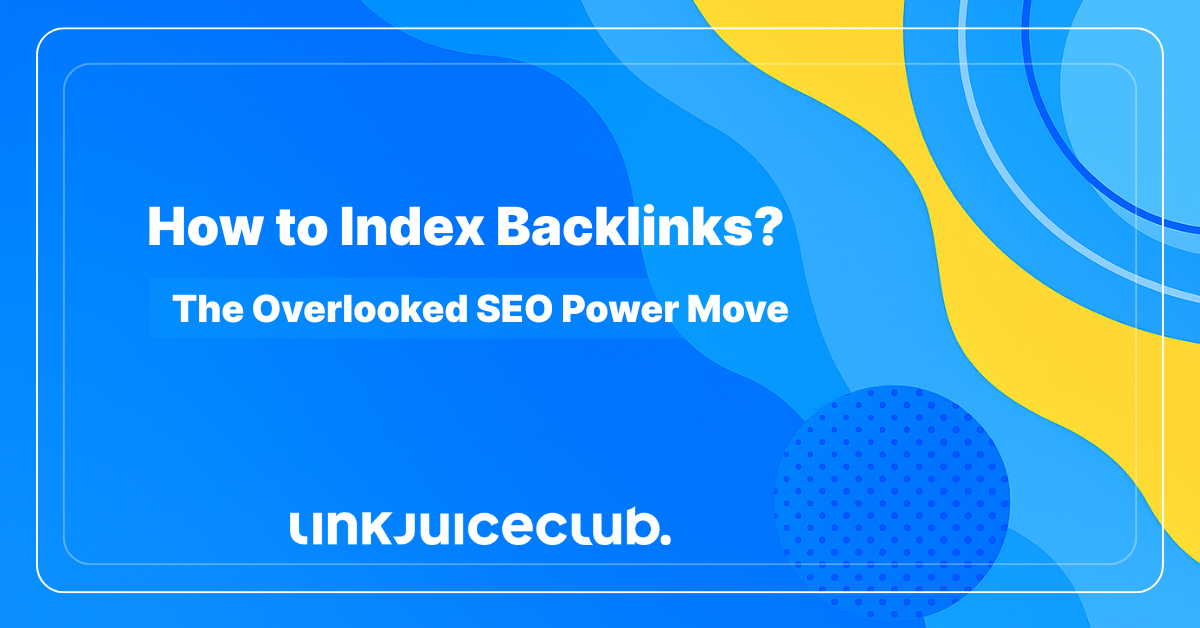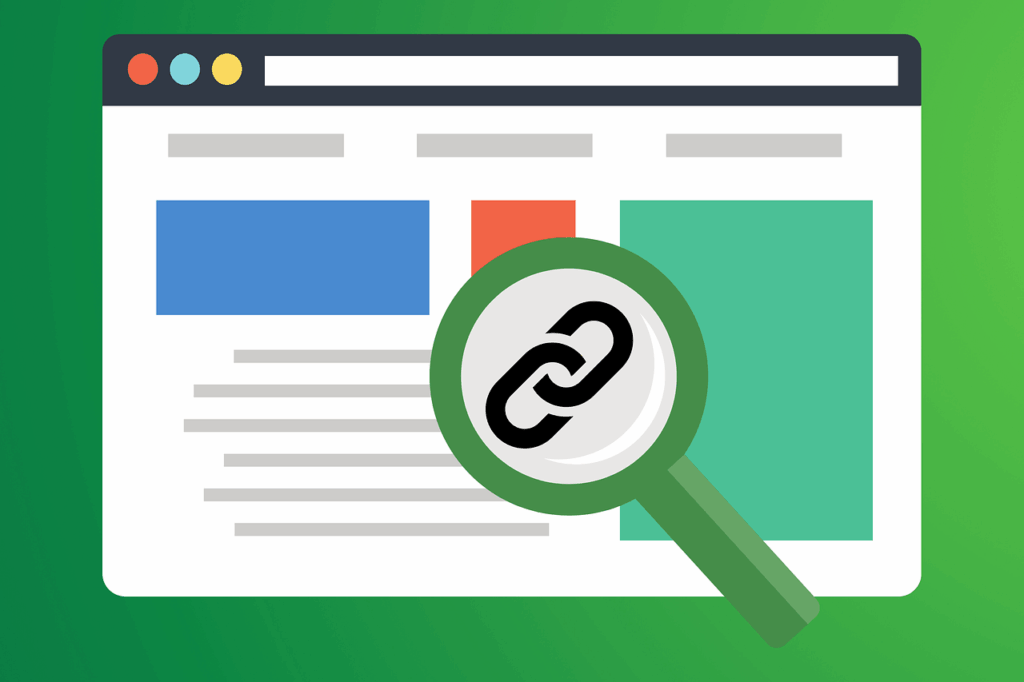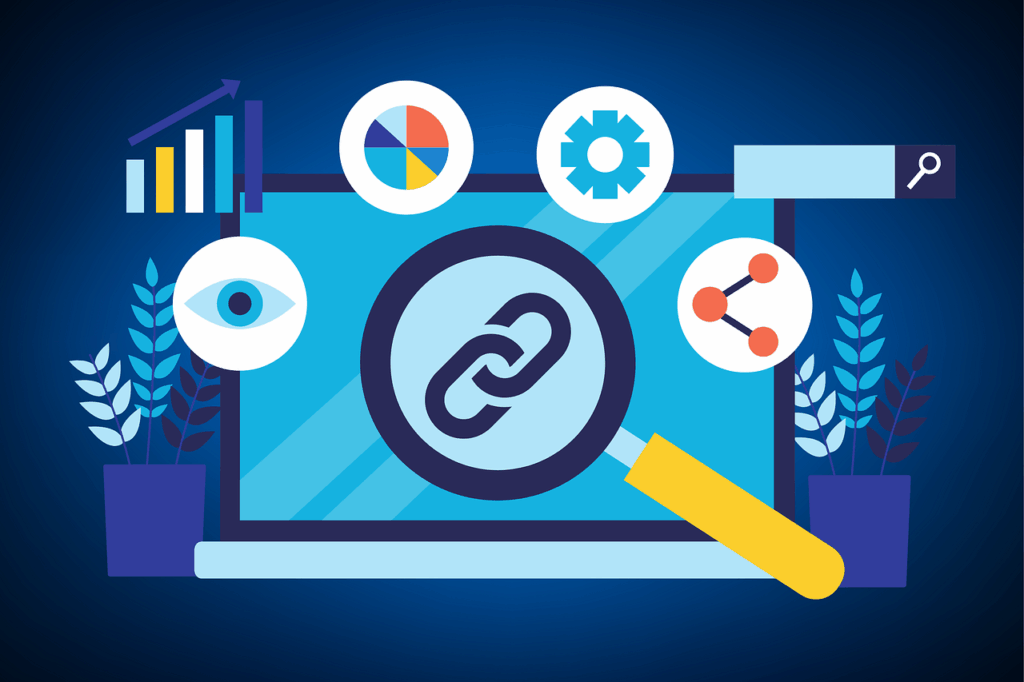
How to Index Backlinks? The Overlooked SEO Power Move
You can land powerful, high-quality backlinks, well-placed on trusted sites that get loads of daily traffic. But, what if Google never sees it? Simply put, it never happened.
No crawl means no authority passed. No authority passed means no movement in rankings. Full stop.
And that’s what makes backlink indexing one of the most neglected, misunderstood, and ROI-shattering parts of SEO. The best links in the world won’t help if they’re buried where Googlebot never goes.

What Indexing a Backlink Really Means (And Why You Should Care)
Let’s kill the fluff.
When we say a backlink is indexed, we’re saying that Google has crawled the page, found your link, and added it to the list of signals that influence your rankings.
Until that crawl happens?
That link might as well not exist.
The catch? Most of the time, you’re placing links on third-party sites you don’t control. So if Google decides the page isn’t worth crawling, your link dies in the dark.
Understanding how to index backlinks (and why some links sit ignored) is the first step toward fixing it. And in this game, visibility is power, you should remember this as one of the fundamental aspects of SEO.
Why Your Backlinks Are Getting Ignored by Google
If your backlinks aren’t being indexed, it’s not because the algorithm is broken. It’s because your links simply aren’t making the cut.
In most cases, the problem isn’t the link itself, but where it lives. If the linking page barely gets crawled or sits on a site with no authority, your backlink is practically invisible.
Poor site structure is another silent killer. When internal links are weak or nonexistent, Googlebot might never find your page, let alone follow the backlink.
Lastly, if nothing on that page is triggering crawl-worthy signals (no traffic, no engagement, no updates) it’s not getting any love from Google. That’s why your $10 link on a DR20 site with one lonely paragraph and a dozen low-effort posts around it isn’t moving the needle.
In short: Google doesn’t index everything. It prioritizes what it sees as valuable. If you want your backlinks counted, they need to live on pages that earn a crawl.
Proven Methods to Get Your Backlinks Indexed Fast
If you’re spending time, money, or effort to build backlinks but not making sure Google actually sees them, you’re wasting valuable SEO potential.
Especially in saturated markets like SaaS, eCommerce, and affiliate, where every link has to pull its weight, you need to actively push your backlinks into the index.
So, without further ado, these are the strategies that actually work.
1. Build on Pages Google Already Loves
This is the first rule of smart link building: place your backlinks where Google is already showing up.
When you’re evaluating a potential placement, don’t just look at the DR; check whether the actual page is in Google’s index, if it’s getting organic traffic, and if the site publishes frequently enough to keep the crawlers coming back.
If the host site is barely updated or hasn’t had a page indexed in months, don’t expect your link to magically get noticed. Focus on platforms that already enjoy regular crawl activity, and your indexing chances will go way up!
2. Use Google Search Console to Your Advantage
Yes, it’s still a viable option, at least when you control the site where your link lives. If you’ve dropped a backlink on a guest post, niche edit, or something similar, you can manually request indexing via Google Search Console.
Just add the property, use the URL inspection tool, and hit Request Indexing. This won’t guarantee instant results, but it usually triggers a crawl attempt within a few days.
If the page is decent, it often gets indexed shortly after.
3. Leverage Indexing Tools That Actually Work
There are dozens of indexing tools out there, but most are useless. The ones that do get results tend to use a combination of Google’s indexing API, simulated traffic, and pinging methods to nudge Googlebot into action.
Top performers in 2025 include Indexceptional, Omega Indexer, and SpeedLinks VIP. Tools like IndexInject or IndexMeNow also do the job well on smaller batches.
4. Get Googlebot’s Attention Through Social Media
Google doesn’t care about your likes or retweets, but it does crawl platforms like Reddit, X, Facebook, and Pinterest constantly. Not because of social signals, but because these platforms have massive crawl priority and, in some cases, real-time indexing.
That’s why sharing your backlink pages across these sites can help push them into the crawl queue.
Here’s how to do it right: Share the URL from an account that already gets traction. Don’t just drop a raw link, embed it naturally inside a discussion, use hashtags to boost visibility, and aim to spark replies or shares to simulate real engagement.
If you’re wondering where to focus, prioritize Reddit first, then X, followed by Facebook, Pinterest, and LinkedIn.
This isn’t about going viral; it’s about getting your link crawled.
5. Trigger Indexing With a Classic: RSS Feeds
Every WordPress site comes with a built-in RSS feed (usually ending in /feed/). And that feed is a crawl beacon for Google.
To use it, take your backlink URL, embed it in a blog post on your own domain (or one you control), and make sure that post gets picked up by your RSS feed. Then submit that feed to indexing aggregators like Feedage, Feedburner, Ping-o-Matic, or your favorite indexing tool.
Once the feed updates and gets pinged, Googlebot is likely to come knocking. If your link is in that update, it’ll get crawled.
6. Boost Indexing With Tiered Linking
Sometimes you land a solid link, but it just sits there, ignored by Google. To fix this, try to point more links at that link.
This method is called tiered linking!.
You can do this by linking to your backlink from a Web 2.0 blog post, dropping a couple of blog comments on already indexed domains, or mentioning the linking page naturally on Quora or niche forums.
It’s like giving your link a little push into the spotlight.
7. Indexing API: Your Secret Weapon (That’s Not So Secret)
Forget the myths. You absolutely can use Google’s Indexing API for more than just job posts or livestreams, even though the official docs say otherwise.
Pages get crawled within minutes, indexed within a few hours, and we’ve never once triggered a warning or penalty in Google Search Console.
So if you control the site the backlink lives on, skip the waiting game. Use the API.
It’s not cheating. It’s using a system that Google gave us, and using it better than everyone else!

Outdated Indexing Methods You Should Stop Wasting Time On
Not every tactic that once worked still holds water. Some indexing strategies are not just ineffective, they’re flat-out dead.
- Basic Pinging Tools
Sending out ping requests to Google doesn’t mean much if the page you’re pinging is thin, low-value, or generic AI fluff. Without quality content or crawl-worthiness, pinging is just noise.
- Bookmarking Sites
Posting your backlink across dozens of free bookmarking platforms? Google’s been there, indexed that, and moved on. These sites are rarely crawled and carry little to no weight anymore.
- The Wait and Hope Approach
Hoping Google discovers your link on a low-authority, low-traffic page is like tossing a bottle into the ocean. If it’s not already on Google’s radar, it won’t magically float there.
Bottom line? Google has gotten a lot smarter (and lazier, if you ask us!) about what it bothers to crawl. If your strategy relies on outdated, high-noise tactics, you’re simply wasting your time.
How to Check If Google Actually Indexed Your Backlink
Before you even think about fixing or boosting a link, you need to know if it’s been seen by Google in the first place.
Here’s the cleanest way to check:
- Start by heading into Ahrefs or Semrush. Pull a report of your backlinks and filter it down to live links only.
- Next, grab the exact URL of the page where your backlink lives. Pop it into a simple Google search using the site: operator like this:
site:example.com/blog-post-title
- If the page shows up in the results, it’s indexed. If it doesn’t, the link is invisible as far as Google is concerned.
Indexing Isn’t a Bonus, It’s the Backbone of Link ROI
Most people think building the backlink is the win. It’s not. The real win happens later on, when Google crawls that page, credits your site, and shifts your rankings.
If that never happens, we can simply regard it as a wasted opportunity.
You can throw up all the DR90 links you want. But if they’re not indexed, you’re building invisible bridges that go nowhere.
The solution? Take control. Build a system that makes sure every backlink gets noticed. You need to index backlinks deliberately, not accidentally. These days, the real difference between showing up in the rankings or being completely ignored is whether Google actually discovers and indexes your links.
At Link Juice Club, we don’t hope for indexing, we engineer it. If you want your links to do more than just sit pretty, we can help you turn them into real ranking power that drives visibility, authority, and growth.





